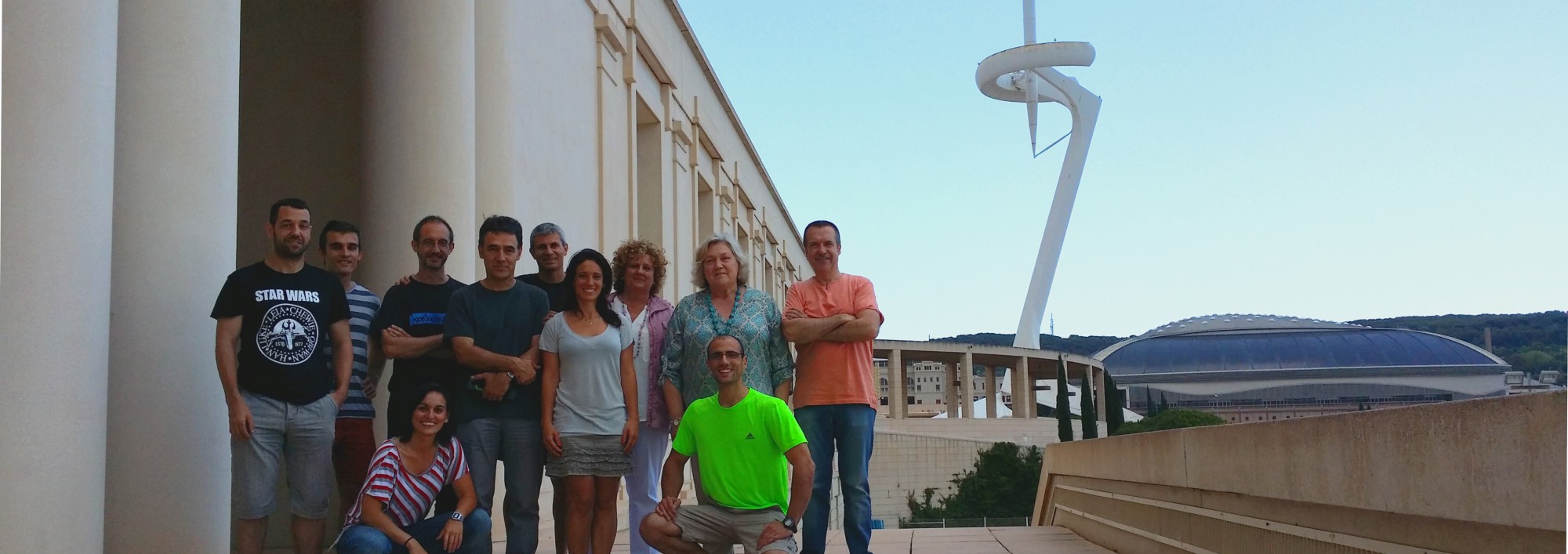
The present entry is a brief review of an original article entitled ‘Effects of hamstring-emphasized neuromuscular training on strength and sprinting mechanics in football players’ from Mendiguchia, Martinez-Ruiz, et al. (2014) recently published in Scand J Med Sci Sports. Link here.
Author Archives: admin
Principal Component Analysis Workshop by Dr. Peter Federolf

The Resarch Group in Physical Activity and Health (GRAFiS) has invited Dr. Peter Federolf to conduct an introducing workshop to the Principal Component Analysis statistical method, which has good application to the human movement study. The workshop will be done at the INEFC Barcelona facilities, at the aula magna 3, the next Monday 14th and Tuesday 15th of September, from 15:00 to 17:00. The workshop it’s free and open to anyone who is interested in the subject.
Defense of the doctoral thesis “Neuromuscular fatigue assessment in the off-road motorcycle rider’s forearm”

On July 3, 2015 was presented the thesis “Neuromuscular fatigue assessment in the off-road motorcycle rider’s forearm” supervised by Dr. Michel Marina. The dissertation was defended by the PhD candidate Priscila Torrado, who obtained her PhD from the University of Barcelona.
The jury was composed of Dr. Jordi Porta Manceñido (Researcher), President, Dr. Joan Aureli Cadefau Surroca (INEFC -Barcelona-) and Dr. Raul Garcia Bescós (Plymouth University).
Exercise as tool for people’s intellectual and motor development

How important is physical activity for people life? Daily new evidences are added responding this question and reinforcing the importance of the physical exercise practice. The benefits from an active life extend from a healthier cardiovascular system to a better emotional health (Agarwal, 2012; Stathopoulou, Powers, Berry, Smits, & Otto, 2006). Lastly, one of the benefits that have raised more interest amongst the science community is the role of the exercise on the improvement of cerebral processes.
Comparative effects of horse exercise versus traditional exercise programs on gait, muscle strength, and body balance in healthy older adults

Last January the Journal of Aging and Physical Activity published a paper titled “Comparative effects of horse exercise versus traditional exercise programs on gait, muscle strength, and body balance in healthy older adults”. This paper is part of the doctoral thesis of Silvia Aranda-García directed by Rosa M Angulo-Barroso, both members of GRAFiS.
Continue reading
Preventing falls among older people. Is enough with a physical training?

The fall of an elderly person can carry physical consequences, which can range from a muscular injury to a bone fracture, and/or psychosocial consequences derived from fear of falling (Kendrick, et al., 2014). There are risk factors for falling in older people who are not modifiable (eg age, arthritis, stroke’s history….) and others that are modifiables (Kendrick, et al., 2014; Moncada, 2011). Through exercise practiced regularly can improve many of the modifiable factors both physical (eg. Impaired balance, impaired gait, muscle weakness) (Moncada, 2011) and psychosocial aspects (eg. mood, fear of falling) (Kendrick, et al., 2014).
Continue reading
Inertial training to prevent injury
Sorry, this entry is only available in Español.
